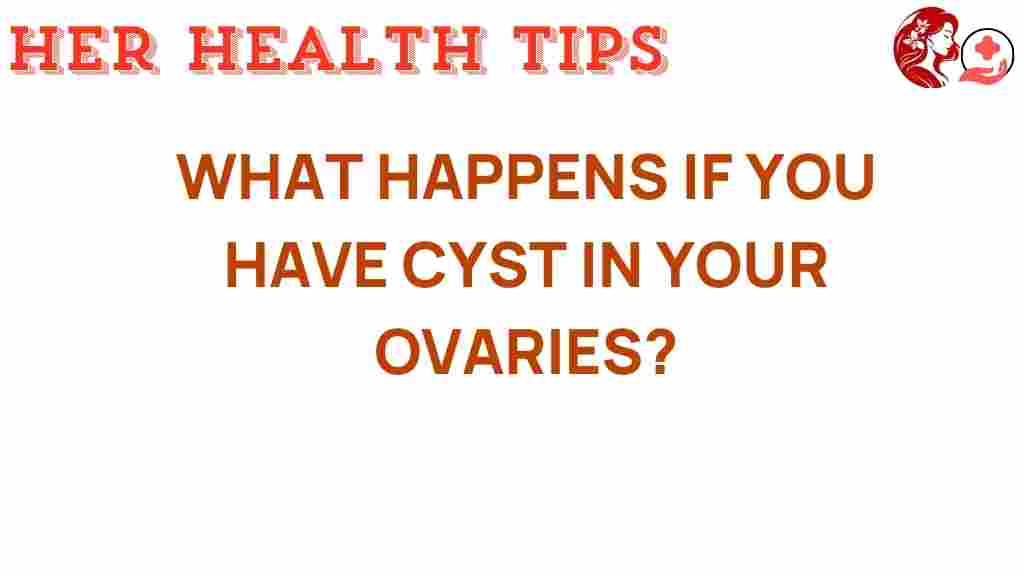The Hidden Truth: What Happens If You Have Ovarian Cysts?
Ovarian cysts are fluid-filled sacs that can form on or within the ovaries. They are common among women of all ages, especially during their reproductive years. While most ovarian cysts are benign and asymptomatic, understanding the symptoms, diagnosis, and treatment options is crucial for maintaining optimal women’s health and reproductive health. In this article, we delve into the hidden truths about ovarian cysts, exploring what they are, their risk factors, how they are diagnosed, and the various management strategies available.
Understanding Ovarian Cysts
Ovarian cysts are often classified into two main categories: functional and pathological. Functional cysts are a normal part of the menstrual cycle and typically resolve on their own. Pathological cysts, however, can be more complex and may require medical intervention.
- Functional Cysts: These include follicular cysts and corpus luteum cysts, which occur during the menstrual cycle.
- Pathological Cysts: These include dermoid cysts, cystadenomas, and endometriomas, which may require further evaluation.
Symptoms of Ovarian Cysts
Many women with ovarian cysts experience few or no symptoms. However, some may notice signs that warrant medical attention. Here are some common symptoms associated with ovarian cysts:
- Pelvic pain, which may be sharp or dull
- Abdominal bloating or swelling
- Changes in menstrual cycles, such as irregular periods
- Pain during intercourse
- Frequent urination or difficulty emptying the bladder
- Difficulty with bowel movements
If you experience severe pain, fever, or signs of shock, seek immediate medical advice, as these may indicate a ruptured cyst or other complications.
Diagnosis of Ovarian Cysts
Diagnosing ovarian cysts typically involves a combination of medical history, physical examinations, and imaging tests. Here’s a step-by-step process for diagnosis:
- Medical History: Your healthcare provider will ask about your symptoms, menstrual cycle, and any relevant medical history.
- Physical Examination: A pelvic exam can help the doctor assess for abnormalities in the ovaries.
- Imaging Tests: Ultrasound is the primary imaging technique used to visualize ovarian cysts. In some cases, CT scans or MRIs may be used for further evaluation.
- Blood Tests: These may be conducted to check hormone levels or tumor markers, especially if there is suspicion of malignancy.
Risk Factors for Ovarian Cysts
Understanding the risk factors associated with ovarian cysts can help in prevention and early detection. Some common risk factors include:
- Hormonal imbalances
- Menstruation that begins at an early age
- Menopause at a later age
- History of ovarian cysts or other reproductive health issues
- Conditions such as polycystic ovary syndrome (PCOS)
Treatment Options for Ovarian Cysts
Treatment for ovarian cysts depends on several factors, including the type of cyst, symptoms, and overall health. Here are the main treatment options:
1. Watchful Waiting
In many cases, especially with functional cysts, your doctor may recommend a watchful waiting approach. This involves monitoring the cyst with follow-up ultrasounds over several months.
2. Medications
If you experience discomfort or if the cyst is large, your doctor may prescribe:
- Hormonal birth control pills: These can help regulate the menstrual cycle and reduce the likelihood of new cysts forming.
- Pain relief medications: Over-the-counter pain relievers may be recommended to manage symptoms.
3. Surgical Intervention
If a cyst is large, does not go away, or is suspected to be cancerous, surgery may be necessary. Surgical options include:
- Laparoscopy: A minimally invasive procedure where small incisions are made to remove the cyst.
- Laparotomy: A more invasive surgery for larger cysts or when cancer is suspected.
Management of Ovarian Cysts
Managing ovarian cysts involves a combination of medical treatment, lifestyle changes, and regular monitoring. Here are some effective management strategies:
- Regular Check-Ups: Routine gynecological exams can help in early detection of cysts and other reproductive health issues.
- Healthy Lifestyle: Maintaining a balanced diet, regular exercise, and a healthy weight can influence hormone levels and overall health.
- Stress Management: Techniques such as yoga, meditation, or therapy can help in managing stress, which can impact hormonal balance.
When to Seek Medical Advice
It’s essential to consult a healthcare provider if you experience any concerning symptoms or if you have a history of ovarian cysts. Early intervention can prevent complications and promote better women’s health.
Troubleshooting Tips for Managing Ovarian Cysts
Here are some troubleshooting tips for women dealing with ovarian cysts:
- Maintain a Symptom Diary: Track any symptoms, their severity, and frequency to provide your healthcare provider with valuable information.
- Educate Yourself: Understanding your body and the nature of ovarian cysts can empower you to make informed decisions about your health.
- Communicate Openly: Discuss any changes in symptoms or concerns with your healthcare provider to ensure proper management.
Conclusion
Ovarian cysts, while common, can be a source of concern for many women. Understanding the symptoms, diagnosis, and treatment options is crucial for managing your reproductive health effectively. Regular check-ups and being aware of your body can lead to early detection and better outcomes. If you suspect you have ovarian cysts or are experiencing symptoms, don’t hesitate to seek medical advice. Remember, staying informed is a vital aspect of maintaining your overall health.
For more information on women’s health topics, consider visiting this resource. If you have further questions about ovarian cysts, speak to your healthcare provider for personalized medical advice.
This article is in the category Reproductive and created by HerHealthTips Team
